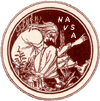A Two-Day International Workshop
Tel Aviv University, December, 18-19, 2013
A vast tradition of literary and theoretical reflections has mapped modernity in the fragmented, synaesthetic experience that characterizes urban life. From the paratactic verses of Wordswoth’s Prelude describing the city of London, to the discussion of the ‘shock’ effect and the hyper-stimultion of the urban sensorium in the works of Walter Benjamin, George Simmel, and, most recently, Ben Singer, the bombardment of ever changing stimuli targeting the perception of the urban flâneur has been set against a tradition of aesthetic and epistemological concern valuing the intuited principle of unity that granted access to truth.
Tel Aviv University, December, 18-19, 2013
A vast tradition of literary and theoretical reflections has mapped modernity in the fragmented, synaesthetic experience that characterizes urban life. From the paratactic verses of Wordswoth’s Prelude describing the city of London, to the discussion of the ‘shock’ effect and the hyper-stimultion of the urban sensorium in the works of Walter Benjamin, George Simmel, and, most recently, Ben Singer, the bombardment of ever changing stimuli targeting the perception of the urban flâneur has been set against a tradition of aesthetic and epistemological concern valuing the intuited principle of unity that granted access to truth.
The publishing industry has contributed to this new experience of modernity by transforming the production and dissemination of narrative units through periodical forms that mechanically reproduced the same episodic impressions, often by capitalizing on the shock factor upon which many genres of popular entertainment depended. The sensational potential of the plots of both popular fiction, drama, and early cinema have challenged and transformed the discourses of class, gender and national identity that structured the dominant culture.
A significant role in the transformation of aesthetic perception, artistic representation and the production of the print industry has been played by the research on vision and the analysis of movement in the course of the ‘long nineteenth century,’ as Max Milner, Jonathan Crary and Marta Braun, among others, have argued. Nineteenth century research on vision has significantly altered not only theoretical discussions but very the modalities of vision that countless ‘philosophical toys’ and popular forms of entertainment disseminated at the level of the everyday.
This conference seeks to map a genealogy of modernity through the ‘sensational’ by taking a comparatist, transnational, interdisciplinary and intermediatic approach to the study of perception and the ways of constructing knowledge in the period going from the emergence of the discourse of aesthetics to the experimentations associated to the early twentieth century avant-garde.
Among the topics considered (but not limited to these):
- the emergence of aesthetics in the eighteenth century
- the research on optics and motion and its impact on literary and artistic mimesis
- sensationalism in the eighteenth century
- the many forms of literary sensationalism in theatrical production and periodical fiction (melodrama, sensation novels, crime fiction, roman judiciaire, etc.)
- adaptations, translations and fortune of specific genres, works and authors of sensational literature in foreign markets
- violence and the project of modernity
- serialization and the status of the reader
- the montage effect in print culture
- political meanings of sensationalism
- the responses to new media and the reverberations of optical toys in theoretical, artistic and literary texts
- points of rupture/continuity in the historical narratives of modernism
- transmediation of the sensational in advertising, precinema and silent film
- the periodical press and the emergence of new journalism
- archeological approaches to the avant-garde
- urban modernism and subjectivity in the long nineteenth century
- the challenges to traditional notions of the sister arts
- comparative models of sensationalism and the genealogies of modernity
- commodity culture and the hybrid text of modernity



